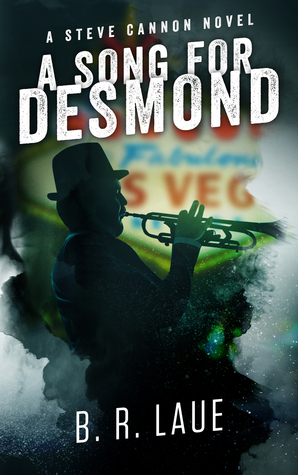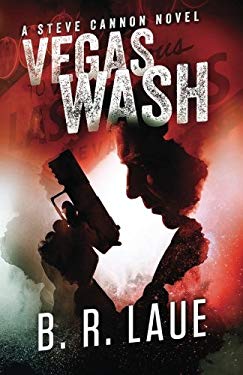Sin City in the Sixties
Steve Cannon plies his trade as a private detective in 1960's Las Vegas. He must walk a thin line between the mobsters that inhabit almost every casino on the Strip and downtown, and the police who have a habit of taking a dim view of his activities. A provocative, fast paced series that illuminates the evolution of Las Vegas from a mob run town to a shining example of corporate efficiency.


Feature
Three American Noir Detective Novels and Why Mystery Writers Should Study Them
It has been sixty-eight years since Raymond Chandler put forth the opinion that there are “no ‘classics’ of crime and detection.” Were he still among us, he might agree that by now there are more than a few and that most of his writings would be found among their number. He might also be surprised by how popular the private detective novel has become, sometimes in spite of itself. Certainly the rules and traditions of the genre have changed, if only to the extent that there are no rules other than those that apply to the writing of all mysteries. Still, when a writer sits before the blank page with the intent of producing something rather hardboiled, the ghosts of efforts past are usually present and accounted for in some form or another. The three novels below are among the main architects of a reader’s expectations when a private detective novel is picked up and several close readings of any or all of them would be a very good primer for the aspiring writer. They are not presented in any particular order and each one presents at least one unique perspective on an element that is at the heart of all good detective fiction: dialogue.
The Maltese Falcon
This sui generis novel introduced readers to the world and the ethos of the private detective. World-weary, cynical, short tempered and a general outcast from polite society, Sam Spade works the San Francisco streets from his down-market offices, sleuthing inside palatial hotels and penthouses he will never inhabit. Aside from Spade himself, Dashell Hammett gives us a novel that bluntly highlights the differences between the American genre and the antecedent British cozy murder mysteries. The detective and his sometimes Quixotian struggles are more the fabric of the narrative than the mystery itself. His rocky relationship with local law enforcement and his penchant for self-inflicted trouble bring his character and those that surround him into sharp relief, the story itself sometimes coming in a close second in reader interest. But it is in the interaction between Spade and the other characters where we find the genius. Sharp, snappy dialogue laced with clever foreshadowing, and mean semantic posturing do more to bring the characters to life than reams of straight description ever could. The interplay that begins in the middle of chapter eleven between Spade and the fat man is a good example. In twelve pages of mostly dialogue, a large amount of important information is shared inside an elegant rhythm and represents a good exercise for writers and those teaching workshops of the kind of magic can happen when two well-drawn characters throw down their cards.
The Friends of Eddie Coyle
George V. Higgins was the editorial director of the Wall Street Journal for many years. He was also one of the best crime writers of the modern era. His protagonist, Eddie Coyle, has a big problem, and in a book that is ninety-one percent dialogue we watch the noose gradually tighten around the neck of the hapless small-time criminal through the patois of the Boston streets. And it is in that dialogue that the characters, the plot and what we think or know about the place is clearly revealed.
Open any page of the book and you are dropped into the middle of a conversation that might be overheard in any rundown bar, but in the hands of a master it delivers the rich verbal scene painting that is always the hallmark of the best writing. Others have tried this technique of using dialog exclusively and while they have never risen to the level of Higgins, it is the epitome of the ‘show, don’t tell’ axiom that every writer probably heard in freshman English class, and is very illuminating if only as an exercise. That this is the only well-known crime novel that uses the technique speaks volumes about the difficulty of such an approach, but a few pages of nothing but talk between two or more central characters would probably improve most novels. It is also interesting to note that The Maltese Falcon transferred to film much better than this book. One would expect that a novel composed entirely of characters talking to each other would be tailor made for most screenwriters, but as is often the case, that kind of magic happens only once.
Trouble Is My Business
Most critics and commentators fail to realize that Raymond Chandler meant much of his metaphorical machinations as a more than a slight parody on the genre. His background as a failed literary writer guaranteed at least a slight condescension when it came to hardboiled detective stories. I could have chosen more famous novels from the Marlowe series, (The Big Sleep, The Long Goodbye) but Trouble is My Business is four Marlowe short stories that I tend to reread more than most and each contains a few more of the colorful descriptions that are used to showcase his real love: the dialogue. He was known to offer the opinion that everything else in a novel is just a way of getting to the "talking parts." Dialogue, first, last and always.
His brand is of the slightly oblique, jargon-laden speech that he imagined was the way wise guys and shady cops spoke in Los Angeles during the ‘40s. Whether they did or not is beside the point as Chandler swings from one colorful bit of patter to another like a trapeze artist when the big top’s on fire (sorry, couldn’t resist), and takes us along for the ride. The sometimes hoary metaphors have aged surprisingly well, though some read as if they were third place winners in a Raymond Chandler writing style contest. I believe a key to their success lies somewhat in the fact that the novel, indeed all the books in the Marlowe series are written in the first person. In a third person style, they seem harder to fit in and have to be neutered to the point where it makes little sense to use them.
Three private detective novels, three different approaches, but each a paean to the quick, bright chatter that sets the noir detective novel apart from almost all other genres.
* * * * *

B. R. Laue is a 2018 IPPY Award winner. His Steve Cannon series of novels follows the private detective as he battles crime and the mob in 1960’s Las Vegas.

